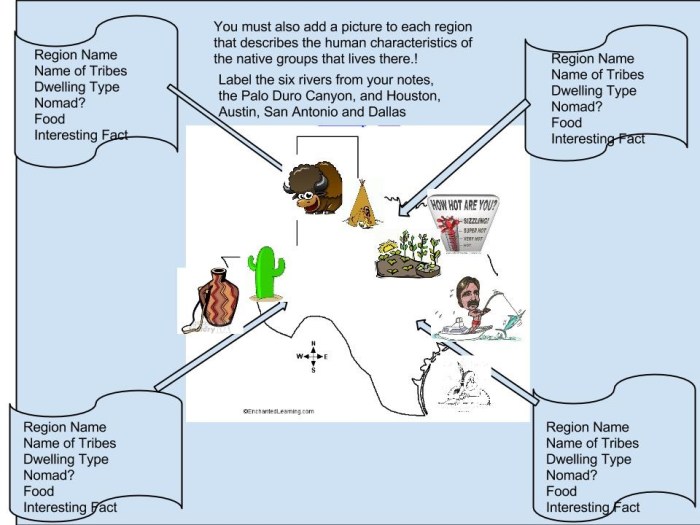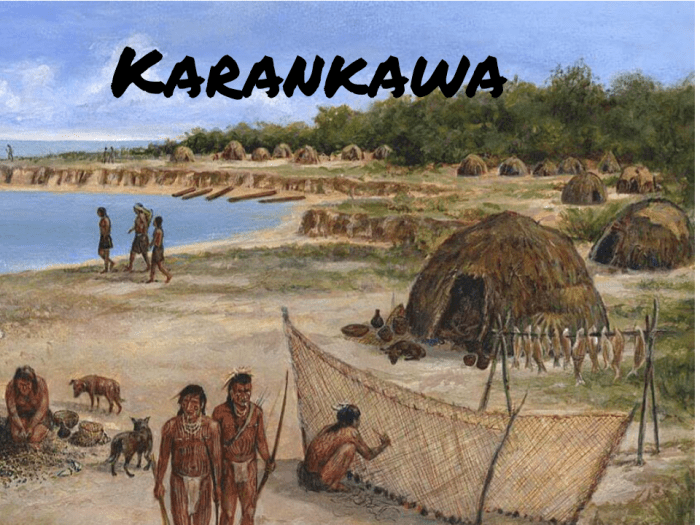Natural Texas and its Peoples sets the stage for this enthralling narrative, offering readers a glimpse into a story that is rich in detail and brimming with originality from the outset. From the diverse indigenous tribes that have inhabited Texas throughout history to the varied ecosystems that shape its landscapes, this exploration unveils the intricate tapestry of a state that is both captivating and complex.
Natural Texas and its Peoples delves into the cultural practices, traditions, and languages of indigenous populations, examining the impact of European colonization on their way of life. It also explores the unique flora and fauna that inhabit each ecosystem, highlighting the challenges and opportunities presented by the state’s diverse landscapes.
Natural Texas and its Indigenous Peoples

Texas is home to a diverse range of indigenous tribes that have inhabited the region for centuries. These tribes, each with their unique cultural practices, traditions, and languages, have played a vital role in shaping the history and culture of the state.
Cultural Practices and Traditions
The indigenous tribes of Texas have a rich cultural heritage that includes a variety of practices and traditions. These practices often revolve around the natural environment, with many tribes having a deep connection to the land and its resources. Some common cultural practices include:
- Hunting and gathering: Many indigenous tribes in Texas relied on hunting and gathering for sustenance. They developed sophisticated techniques for tracking and hunting animals, as well as for gathering plants and other resources.
- Agriculture: Some tribes, such as the Caddo and Karankawa, practiced agriculture and cultivated crops such as corn, beans, and squash.
- Art and crafts: Indigenous tribes in Texas were skilled artisans, creating a variety of art and crafts, including pottery, basketry, and textiles.
- Music and dance: Music and dance played an important role in the cultural and social life of indigenous tribes in Texas. They used music and dance to celebrate special occasions, tell stories, and connect with the spirit world.
Languages
The indigenous tribes of Texas spoke a variety of languages, many of which belong to the Caddoan, Uto-Aztecan, and Athabaskan language families. Some of the most common languages spoken by indigenous tribes in Texas include:
- Caddo: Spoken by the Caddo Confederacy, which included several tribes living in eastern Texas.
- Comanche: Spoken by the Comanche people, who were nomadic hunters and warriors who roamed the southern Plains.
- Tonkawa: Spoken by the Tonkawa people, who lived in central Texas.
- Karankawa: Spoken by the Karankawa people, who lived along the Gulf Coast of Texas.
Impact of European Colonization
The arrival of European colonists in Texas had a profound impact on the indigenous populations of the region. Colonization led to the displacement of indigenous tribes from their traditional lands, the disruption of their cultural practices, and the introduction of diseases that decimated their populations.
Despite the challenges they faced, the indigenous tribes of Texas have persevered and continue to play an important role in the state’s culture and history. Today, there are 29 federally recognized tribes in Texas, with a combined population of over 100,000 people.
The Landscapes of Natural Texas

Texas is a land of vast and varied landscapes, encompassing a wide range of ecosystems that support a diverse array of flora and fauna. From the arid deserts of the west to the lush forests of the east and the coastal plains of the Gulf Coast, each ecosystem presents unique challenges and opportunities for the people who inhabit it.
The Deserts of West Texas, Natural texas and its peoples
The deserts of West Texas are characterized by their extreme temperatures, low rainfall, and sparse vegetation. The Chihuahuan Desert, which covers much of the western part of the state, is home to a variety of cacti, succulents, and other drought-tolerant plants.
The desert also supports a number of animal species, including coyotes, jackrabbits, and rattlesnakes.
The challenges of living in the desert include the lack of water and the extreme temperatures. However, the desert also offers opportunities for those who are willing to adapt to its harsh conditions. The dry climate is ideal for growing certain crops, such as cotton and grapes, and the desert landscape provides a unique setting for outdoor recreation.
The Forests of East Texas
The forests of East Texas are home to a variety of hardwood trees, including oaks, pines, and magnolias. The forests provide a habitat for a wide range of animals, including deer, squirrels, and birds. The forests also support a number of industries, including logging, paper production, and tourism.
The challenges of living in the forest include the dense vegetation and the high humidity. However, the forest also offers opportunities for those who are willing to embrace its beauty and resources. The forests provide a source of food, shelter, and recreation, and they also help to regulate the climate.
The Coastal Plains of the Gulf Coast
The coastal plains of the Gulf Coast are characterized by their low elevation and their proximity to the Gulf of Mexico. The coastal plains are home to a variety of wetlands, including marshes, swamps, and estuaries. The wetlands provide a habitat for a wide range of plants and animals, including fish, shellfish, and birds.
Natural Texas and its peoples have a rich history and culture that is worth exploring. In essence, Six Sigma seeks to improve processes and reduce defects, which can lead to greater efficiency and productivity. This concept can be applied to various aspects of natural Texas, such as its agriculture and tourism industries, to enhance their performance and sustainability.
The challenges of living in the coastal plains include the risk of flooding and hurricanes. However, the coastal plains also offer opportunities for those who are willing to take advantage of their natural resources. The coastal plains are a major source of seafood, and they also support a number of industries, including tourism and recreation.
Natural Resources and the Economy of Texas

Texas is blessed with an abundance of natural resources that have played a pivotal role in shaping its economy. These resources include oil, gas, minerals, and fertile agricultural land.The discovery of oil in Spindletop in 1901 transformed Texas into a major energy producer.
Oil and gas have been the backbone of the state’s economy for over a century, providing jobs, generating revenue, and fueling economic growth. Texas is the leading oil and gas producer in the United States, accounting for nearly a quarter of the nation’s total production.In
addition to oil and gas, Texas is also rich in minerals such as limestone, granite, and sulfur. These minerals are used in a variety of industries, including construction, manufacturing, and agriculture. The state’s fertile agricultural land supports a thriving agricultural sector, with Texas ranking among the top producers of cotton, cattle, and wheat in the United States.
Environmental Challenges and Opportunities
While natural resources have brought economic prosperity to Texas, their extraction and use also pose environmental challenges. Oil and gas production can lead to air and water pollution, while mining activities can damage ecosystems and contaminate groundwater.However, Texas is also taking steps to address these challenges and promote sustainable resource development.
The state has implemented regulations to reduce emissions from oil and gas operations, and it is investing in renewable energy sources such as solar and wind power. Texas is also working to restore and protect its natural ecosystems, such as the Gulf Coast wetlands and the Hill Country aquifers.By
balancing economic development with environmental protection, Texas can ensure that its natural resources continue to benefit the state’s economy and quality of life for generations to come.
Conservation and Preservation in Natural Texas

Texas, with its diverse landscapes and abundant natural resources, has a rich history of conservation and preservation efforts. Recognizing the importance of protecting the state’s natural environment, numerous initiatives have been undertaken to safeguard its ecosystems, wildlife, and resources.
Preserving Biodiversity
Texas is home to a wide variety of plant and animal species, including many that are endemic to the state. Conservation efforts focus on protecting these unique species and their habitats. State parks, wildlife refuges, and conservation easements play a crucial role in preserving biodiversity by providing safe havens for wildlife and protecting sensitive ecosystems.
One notable example is the Balcones Canyonlands Preserve, which protects over 30,000 acres of unique habitat in Central Texas. The preserve is home to endangered species such as the golden-cheeked warbler and the black-capped vireo.
Water Conservation
Water is a precious resource in Texas, and conservation efforts are essential to ensure its availability for future generations. The state has implemented various measures, including water conservation plans, drought contingency plans, and rainwater harvesting programs, to reduce water consumption and protect water resources.
For example, the Texas Water Development Board offers financial assistance to communities for implementing water conservation projects, such as installing low-flow appliances and upgrading irrigation systems.
Land Conservation
Protecting Texas’s vast landscapes is vital for maintaining the state’s natural heritage and supporting its economy. Land conservation efforts include acquiring land for parks and preserves, establishing conservation easements, and promoting sustainable land management practices.
The Texas Parks and Wildlife Department manages over 1 million acres of state parks and natural areas, providing opportunities for recreation and protecting important ecosystems. Additionally, the Texas Land Trust, a non-profit organization, works with landowners to conserve private lands through conservation easements.
Challenges and Successes
Conservation and preservation efforts in Texas face challenges such as population growth, urbanization, and climate change. However, the state has also achieved significant successes, including:
- Protecting over 10 million acres of land through state parks, wildlife refuges, and conservation easements
- Reducing water consumption by over 10% since the 1980s
- Restoring and protecting endangered species, such as the whooping crane and the sea turtle
The conservation and preservation of Natural Texas is an ongoing effort that requires the collaboration of government agencies, non-profit organizations, and individuals. By protecting the state’s natural environment, we ensure its resilience and ensure that future generations can enjoy its beauty and resources.
Expert Answers: Natural Texas And Its Peoples
What is the significance of natural Texas?
Natural Texas encompasses a diverse range of ecosystems, indigenous cultures, and natural resources, making it a region of great ecological, historical, and economic importance.
How have indigenous peoples influenced Texas?
Indigenous tribes have played a vital role in shaping the cultural landscape of Texas, leaving behind a legacy of traditions, languages, and place names that continue to influence the state’s identity.
What are the major natural resources found in Texas?
Texas is rich in natural resources, including oil, gas, minerals, and agricultural products, which have significantly contributed to its economic development.
What are the challenges facing natural Texas?
Natural Texas faces challenges such as climate change, habitat loss, and pollution, which require ongoing conservation and preservation efforts to protect its ecological integrity.

